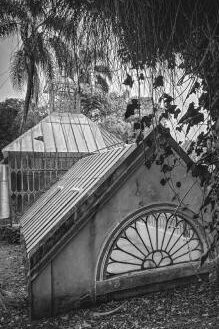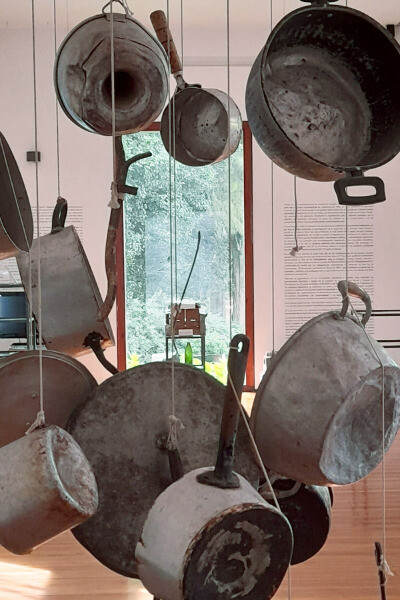From Punta Carretas, one of the most distinguished neighborhoods in the city of Montevideo, Uruguay, it takes about an hour by public transport to reach the country’s Museum of Memory (MUME). This reference is not at all casual. The current Punta Carretas Shopping Center was built on what used to be a maximum-security prison, where in 1971—two years before the coup d’état—the leadership of the Tupamaros, Uruguay’s main left-wing guerrilla organization, was being held. On September 6 of that same year, they escaped in an operation reminiscent of Monsieur Gustave’s breakout in Wes Anderson’s The Grand Budapest Hotel, using tunnels that anarchist prisoners had dug back in the 1920s to make their own escape. Among the political prisoners who fled that day was former Uruguayan president José Mujica, who passed away a few months ago. The site’s transformation—from confinement to consumption—reveals how history and memory coexist, often uneasily, within the same urban fabric.
Today, the prison is a shopping mall, and a military president’s country house has become a museum of memory. Located on the outskirts of Montevideo, the Museum of Memory (MUME) occupies what was once the country estate of Máximo Santos, Uruguay’s authoritarian military president between 1882 and 1886. Before discussing the museum itself, it’s worth pausing to reflect on the house as heritage in its own right—first, because of the symbolic gesture of turning a dictator’s residence into a space for memory; and second, because of its architectural and historical value. This re-signification of space invites visitors to consider how physical places can be reclaimed, resignified, and ultimately democratized through collective remembrance.
The house dates back to 1878, and although its architect is unknown, it is a truly unique building in the city. It was originally a place for rest and leisure. The property’s park, which contains over 80 species of plants and trees, features Victorian-style greenhouses, and it even used to have a small zoo—today, only an Arab-style aviary remains. According to rumor, political dissidents were thrown into the lion pits on Santos's estate, where he kept pumas and jaguars. Keeping wild cats at home was a peculiar habit among powerful men of that era. The most beautiful feature is a small castle with a labyrinth built for children to play in (called Ma poupée). Besides this one, only one other “children’s castle” remains in the city, located just a block away at the Museum of Anthropology, which used to be the Mendilaharsu family estate.
Back to the story. The property changed hands twice in the early 20th century and was later transferred to the state. By the 1970s, it had been abandoned altogether. In 2006, under the presidency of Tabaré Vázquez, the Museum of Memory was created, and it was later inaugurated in December 2007. The curatorial script for the permanent exhibition was developed by historian Magdalena Broquetas. It is organized into seven thematic sections: The Establishment of the Dictatorship, Popular Resistance, Prisons, Exile, The Disappeared, The Recovery of Democracy and the Struggle for Truth and Justice, and Unfinished Stories and New Challenges. This approach is particularly interesting because it historicizes the last military dictatorship without demonizing it—it does not present it as a sudden outburst of madness, but rather situates it within its broader context, identifies forms of resistance, and projects the debate toward the future.
Comparisons are inevitable. Visiting the former ESMA (Navy School of Mechanics) in Buenos Aires is an anguishing experience—its emptiness speaks of horror. But ESMA was a site of terror, a clandestine detention center now preserved as a memorial site. The Silva estate, by contrast, became a museum space full of objects that move you without overwhelming you. In the various rooms, one can see donations from former militants and survivors—such as the overalls worn by former president Mujica during his imprisonment, or a Bible censored by prison authorities. In the inner courtyard, a fountain has been artistically intervened: the central cherub now holds a daisy missing a petal, symbolizing Uruguay’s ongoing struggle for memory.
It is also impossible not to compare the processes on either side of the Río de la Plata. This is not about ranking atrocities—such exercises are sterile and senseless, a pastime of the political right. Yet one fact reveals distinct modes of repression: while in Argentina, forced disappearance was the primary form of state violence, in Uruguay, imprisonment for political reasons predominated. Out of the 173 Uruguayan citizens reported as disappeared, 126 were abducted in Argentina and 9 in Chile, within the framework of Operation Condor. Such differences remind us that each nation must build its own path toward truth, justice, and collective healing.
Along the corridor leading to the main house stands a small greenhouse—an installation by artist Manu Aldabe titled Blue Planet. A small garden grows in soil where the remains of disappeared persons were found, a work that reminds us that memory is a fertile ground that will keep growing.















